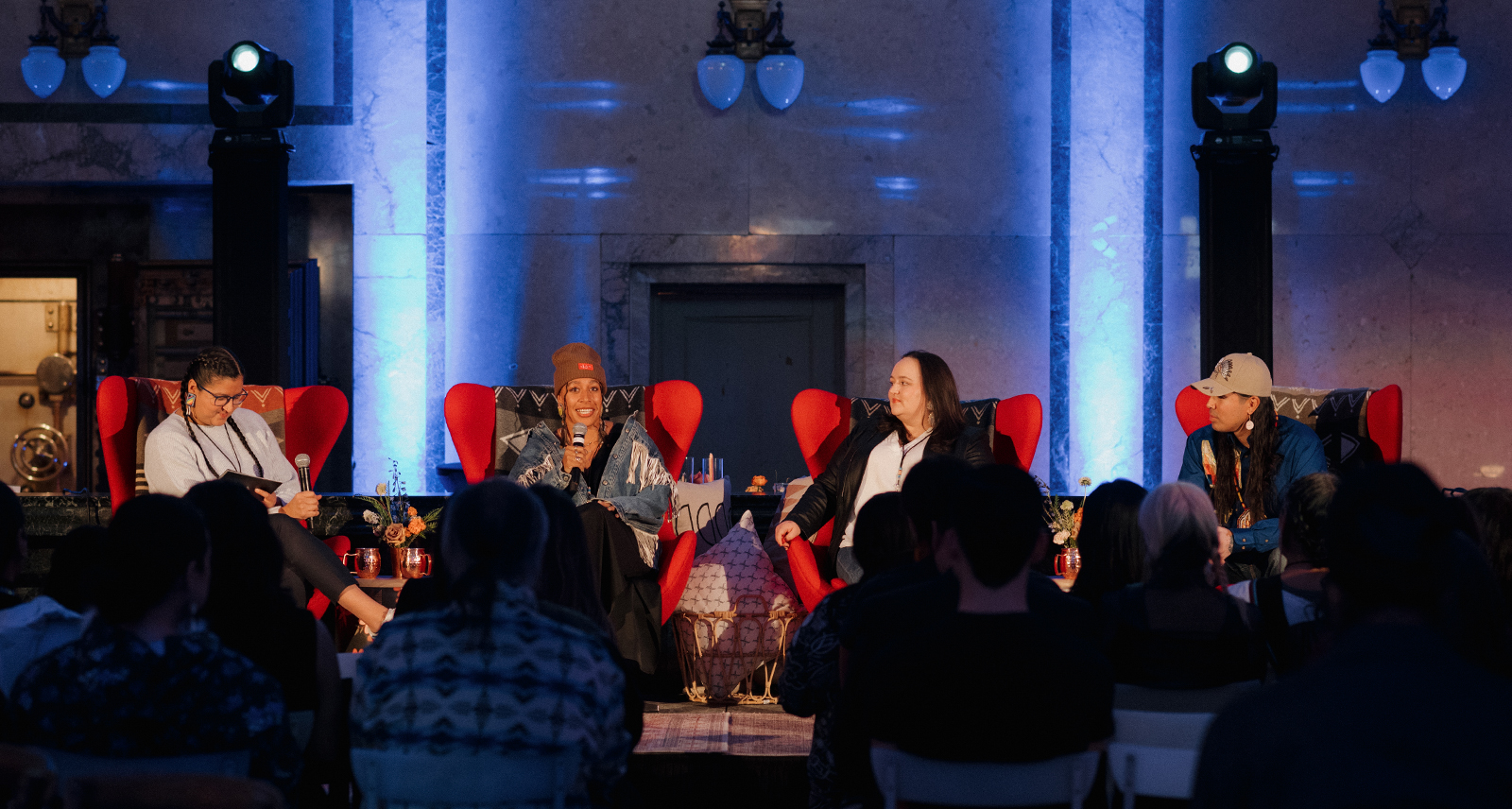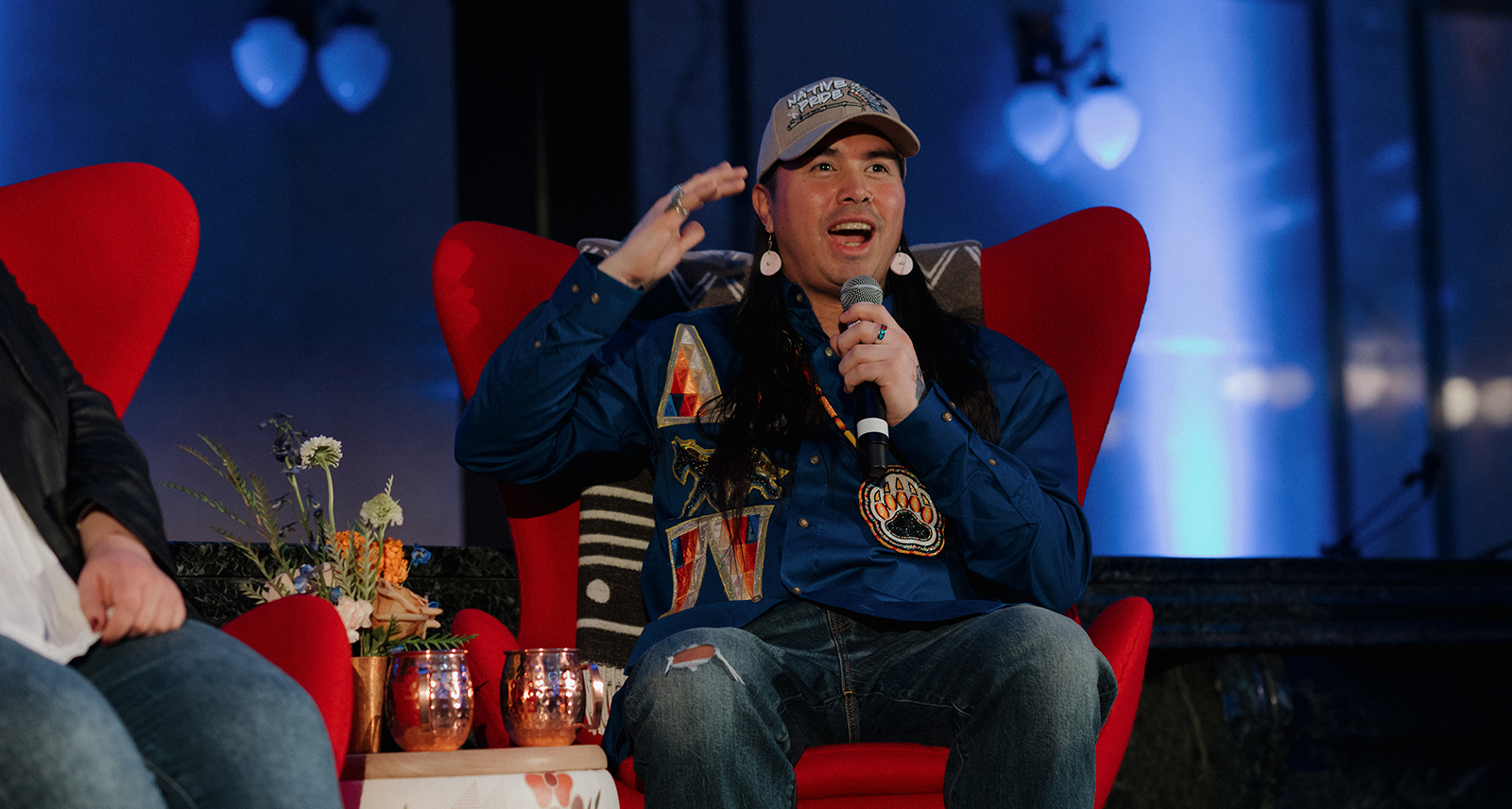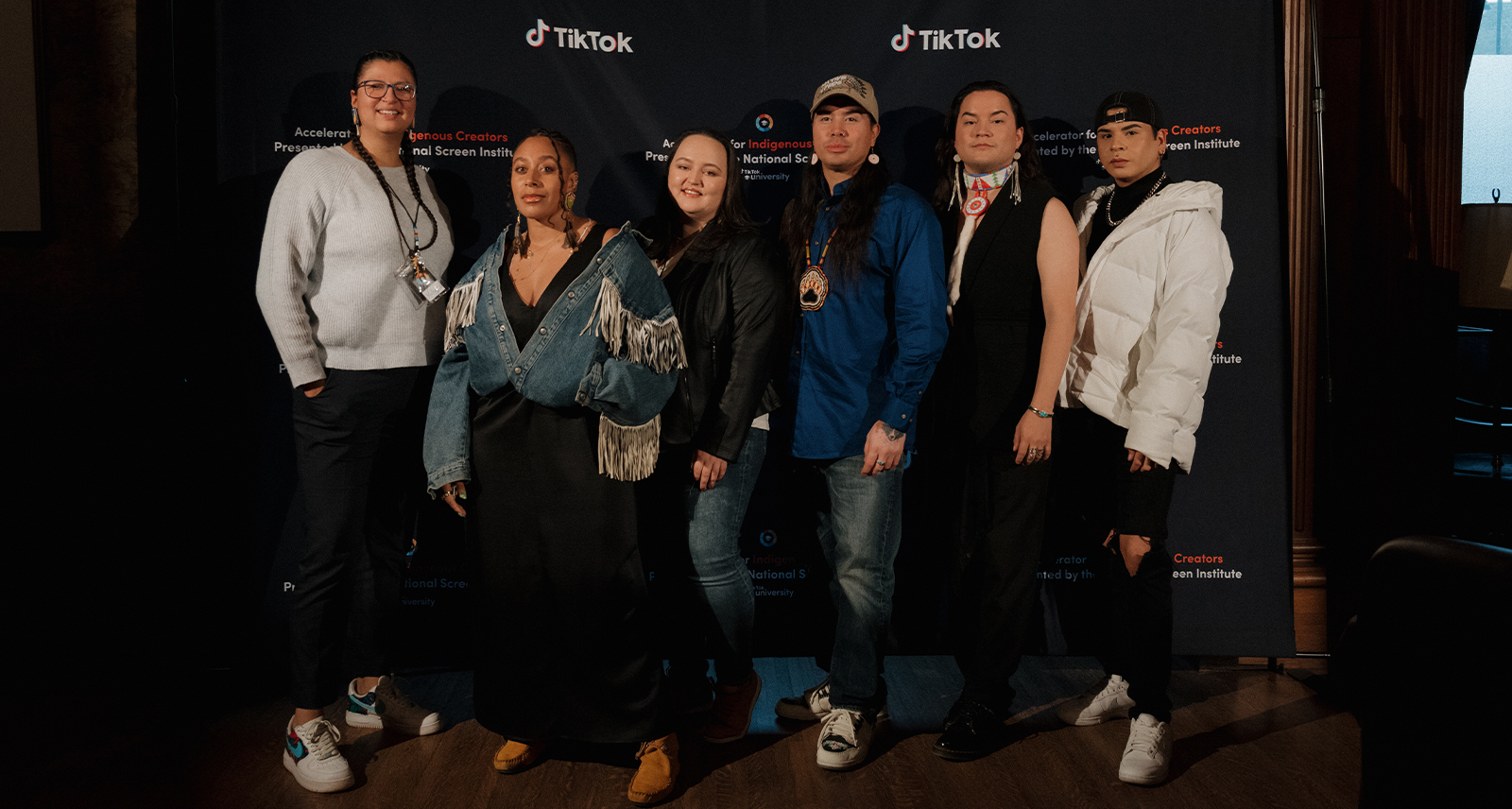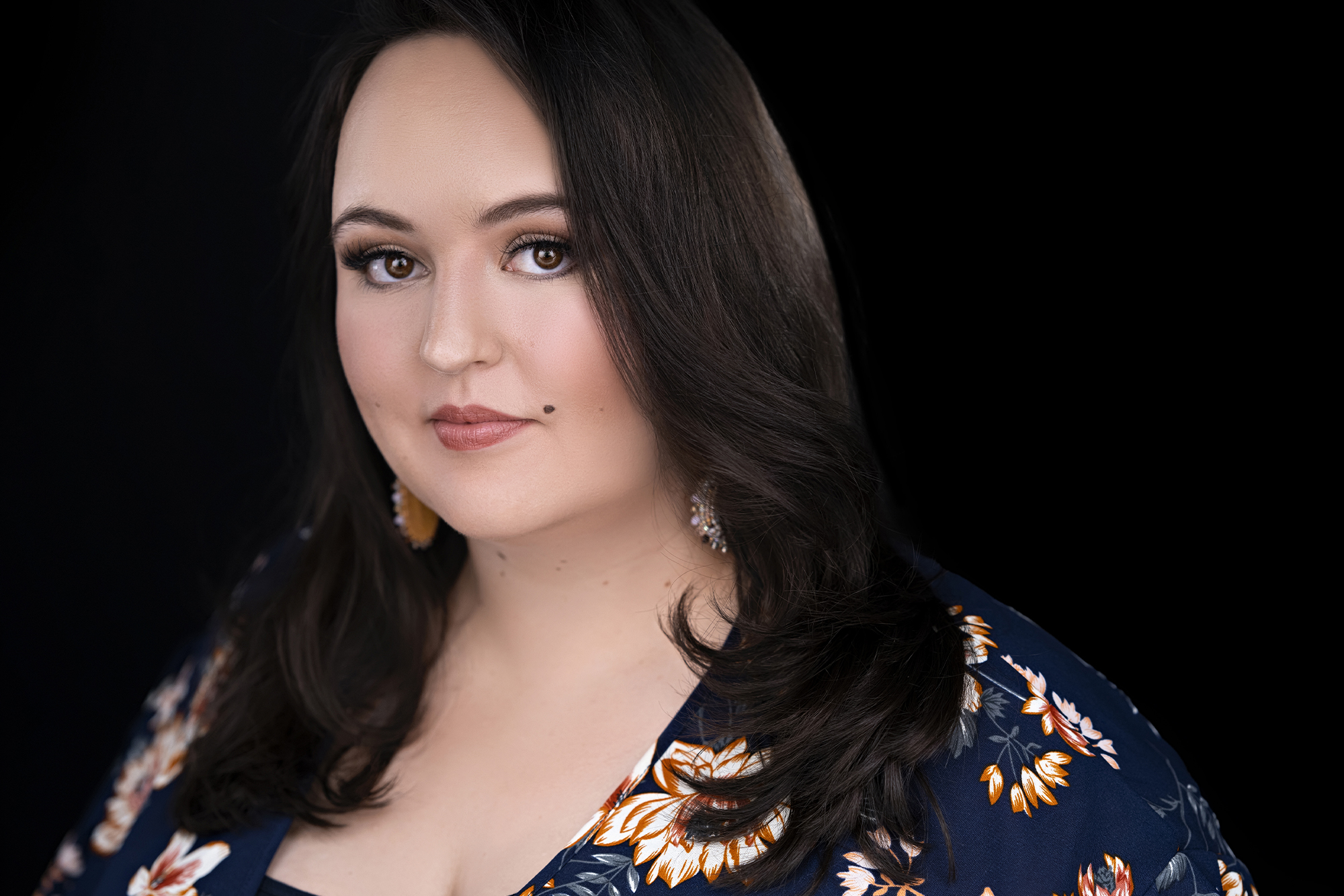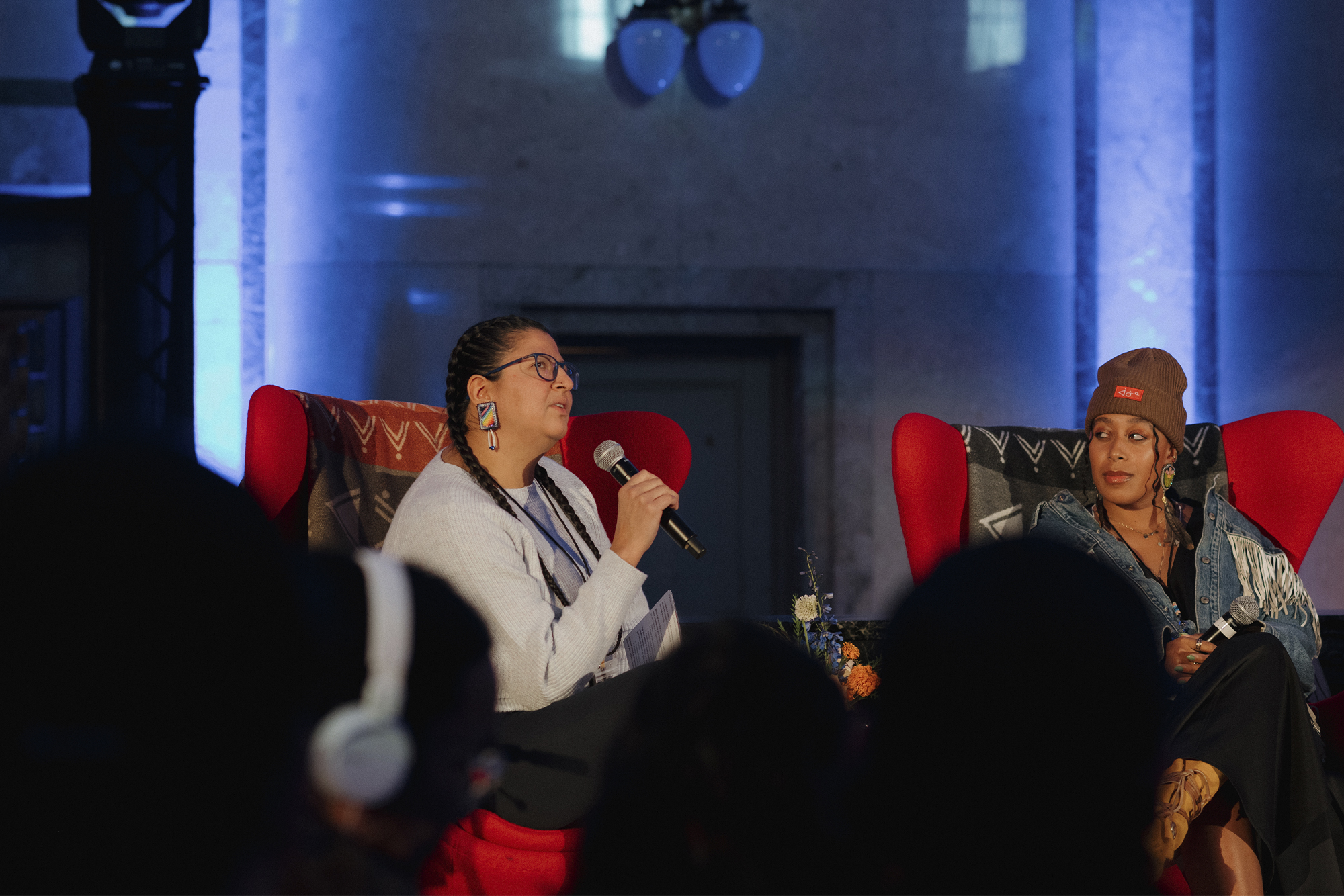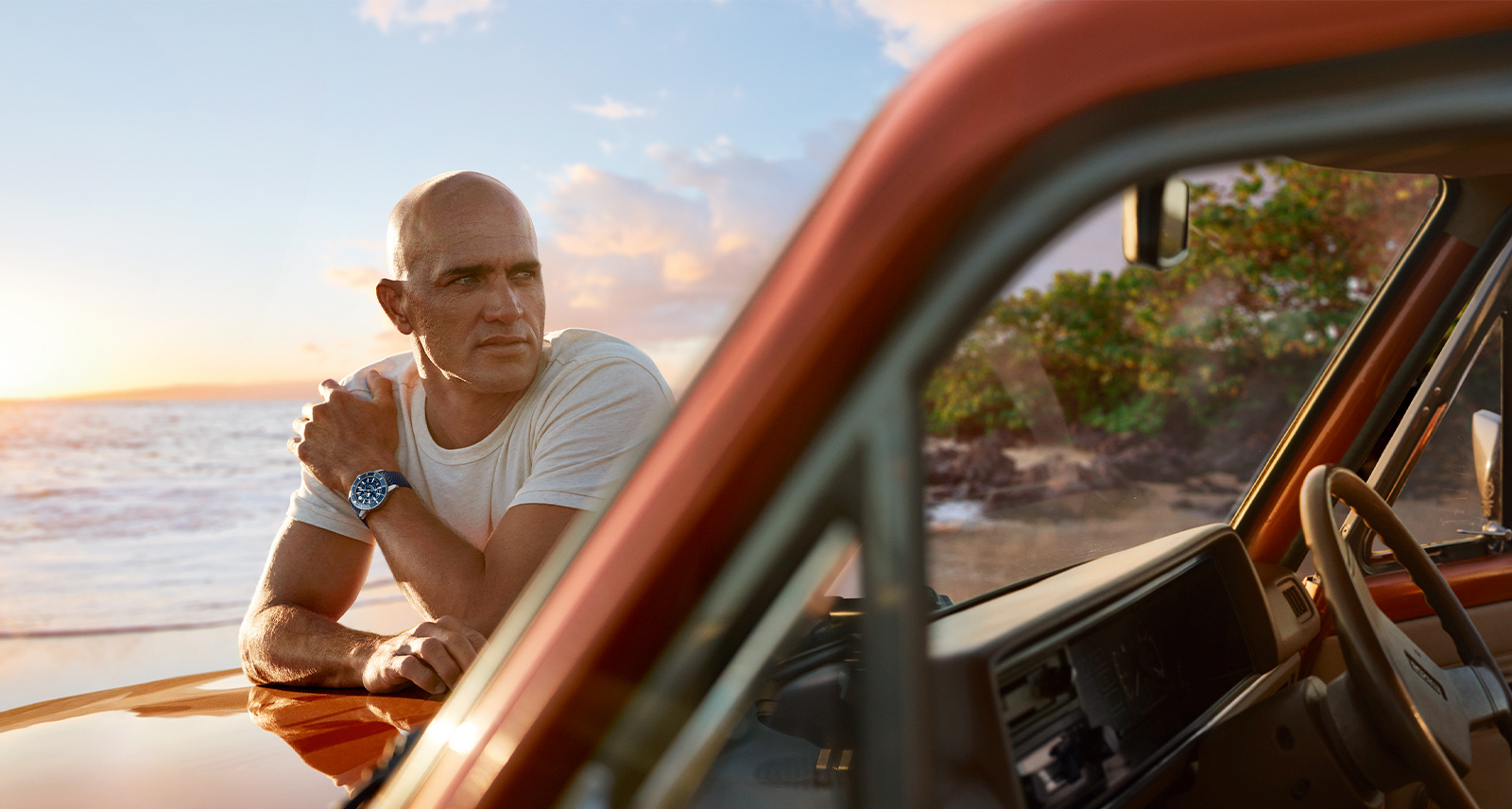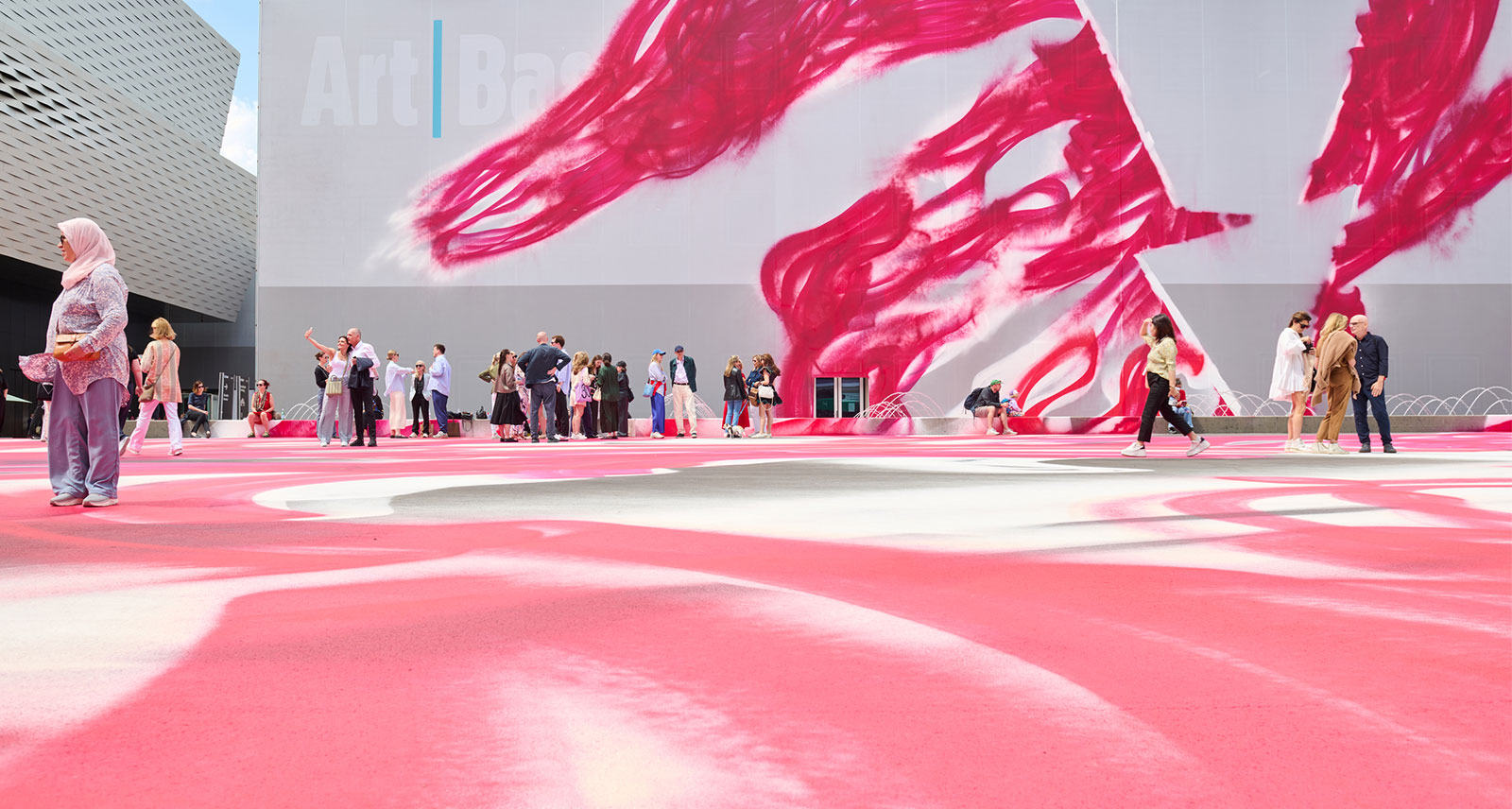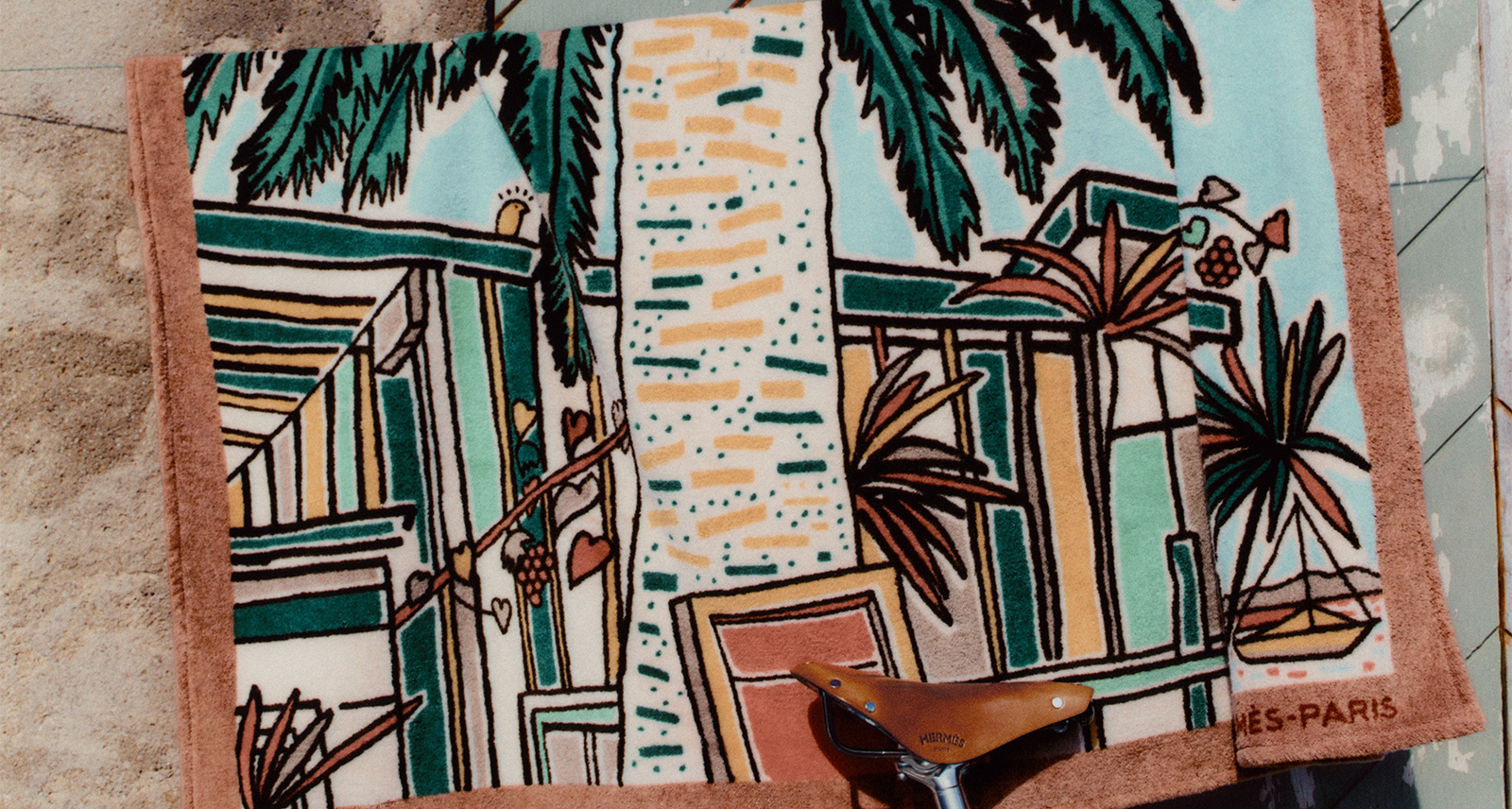Visionary Voices: Indigenous TikTok Creators Talk Community & Storytelling
Before she set the literary world on fire, Melissa Blair was an avid member of BookTok (a nickname for TikTok’s literary community). When she began sharing stories, Blair said she “didn’t get any action” on them. Instead of playing the industry game and finding an agent, Blair took a risk: she self-published her debut novel, A Broken Blade, anonymously. Then, she mailed copies to 25 popular creators on BookTok, complete with a coded message that revealed the author. The mystery hunt went viral on TikTok and landed Blair a publishing deal.
Film-worthy stories like this one were plentiful at TikTok’s Visionary Voices panel. Led by Indigenous Box founder Mallory Yawnghwe, the discussion featured Nêhiyaw (Cree) activist, performer, and speaker James Jones, Anishinaabe-kwe author Melissa Blair, and Wendat-Guinean multidisciplinary artist Aïcha Bastien-N’Diaye. Their personal narratives — from entrepreneurship to dance education — were as diverse as their careers. Still, each story proved that TikTok is more than a social network: it’s a way to build community.
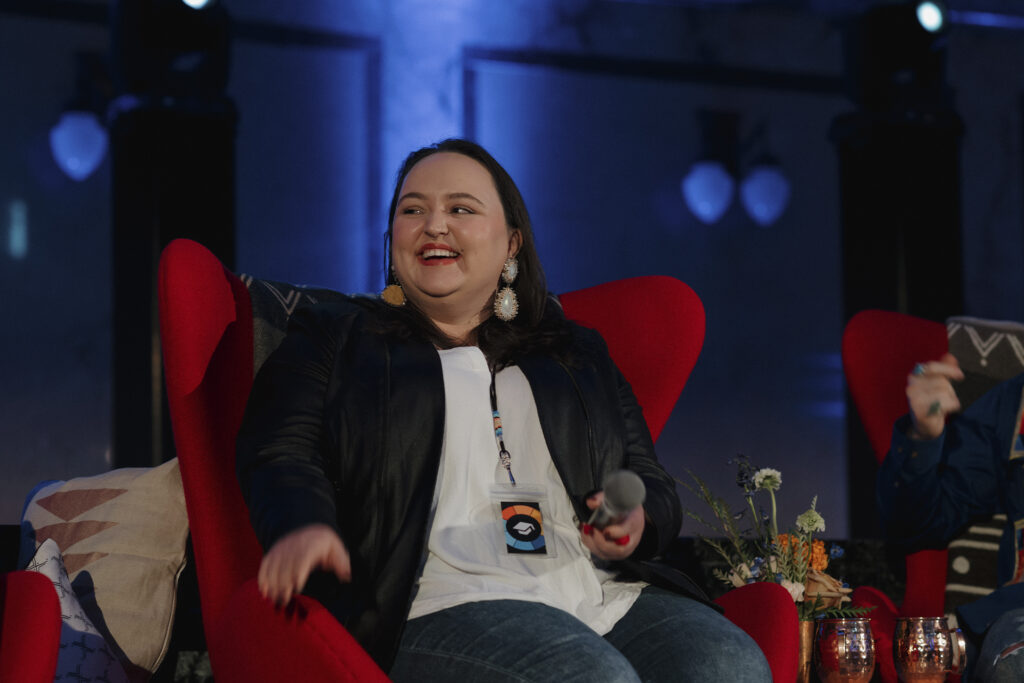
To see the platform’s full potential, look no further than James Jones’ overnight rise. Under the name notoriouscree, James Jones has amassed over four million followers — a number that rivals legacy media groups and Hollywood regulars. For Jones, though, the path was anything but conventional. After COVID-era lockdowns put Jones’ dance career on pause ‘until further notice’ (in true 2020 fashion), he was at a loss. “I remember during lockdown, I lost all my gigs, I lost all my income. I couldn’t afford to pay rent,” he said. The turmoil led him to question his artistic practice; he remembers wondering whether financial security would ever be possible. That’s when Jones took his career into his own hands.
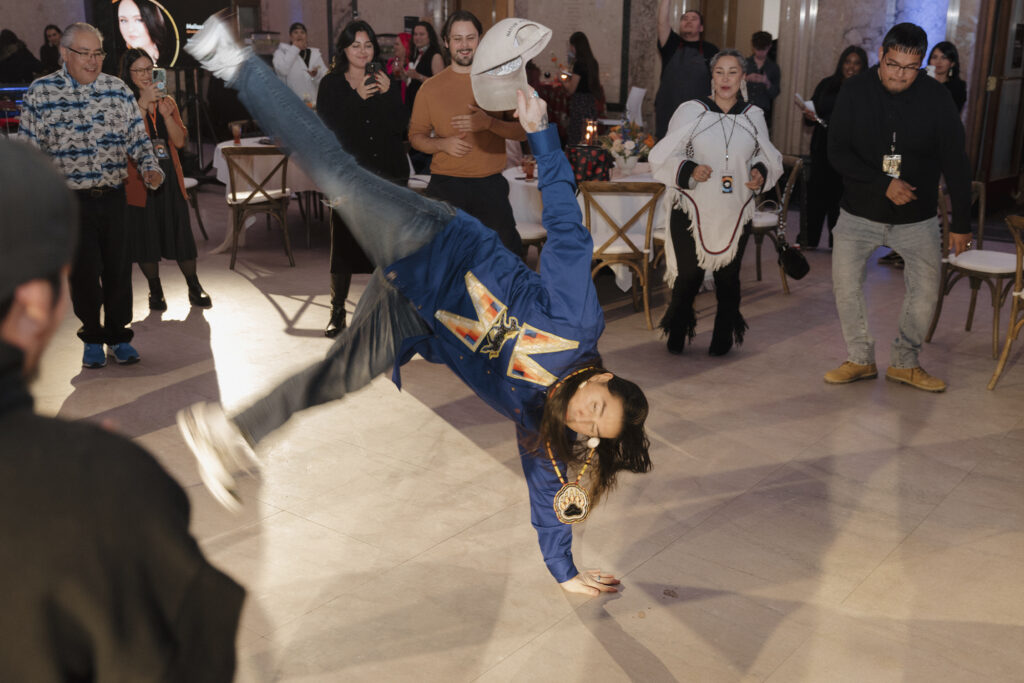
For his first viral video, Jones wore regalia while performing a hoop dance — a style he’d long since perfected — but this time, the routine was set to The Weeknd’s Blinding Lights. It was an instant hit. “I was like 800 bucks into overdraft. I posted a TikTok, and — to make a long story very short — it blew up overnight. Within a couple days, I had 200,000 followers on TikTok,” Jones said. “I remember going live, for the very first time, I made $400 USD.”
The video encapsulates Jones’ charismatic blend of tradition, identity, and modernity. “TikTok, all these platforms are allowing us to be artists, to be ourselves, and share our stories in the way we want to share them,” Jones said. On TikTok, Jones is free to experiment with genres and performance styles. Connecting directly with followers, creators share unfiltered, first-person work. “They’re giving us the freedom to do that; just by going live, by posting live, [we’re] sharing stories that we want to share.”
To those unfamiliar, TikTok’s interface is a laissez-faire hamster wheel of content. The app’s data-driven algorithm curates an infinite loop of videos for each user, rendering previous metrics — like follower counts, page authority, and brand loyalty — obsolete. Contrasting the ‘connect with friends’ ethos of early Facebook and Instagram, TikTok’s algorithm isn’t driven by the people you’re following, but the accounts you engage with. When you like, share, or rewatch a video, you’re telling the platform ‘show me more.’ TikTok has decidedly embraced the ‘influencer-economy.’ They’ve even launched a tipping feature, allowing users to send money directly to their favourite creators. In this system, a large audience means sustainable income.
The publicity doesn’t come without strings, however. “Being on this platform, sometimes people have these narratives of who we should be, and the types of stories that they want us to tell,” said Mallory Yawnghwe. “[They have] expectations that they want us to meet as Indigenous creators. We’re so much more than buffalos and moccasins. We’re so multidimensional.”
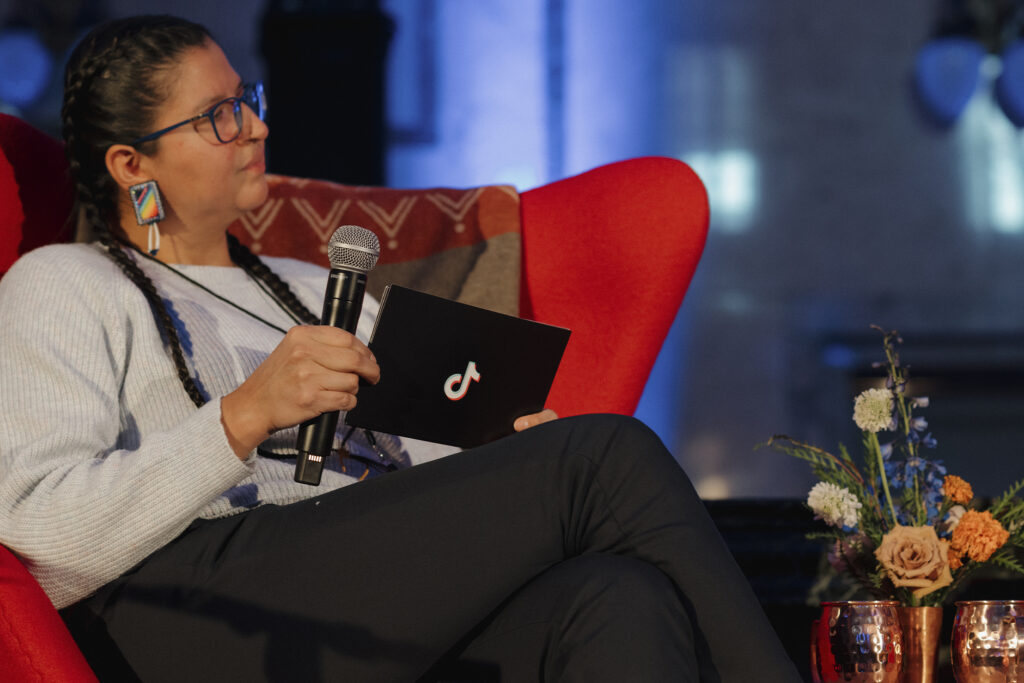
“It’s important to be who you are, whether you want to share that part of your journey,” Yawnghwe added. “Representing in this space, we have to balance walking in two worlds.” It’s a delicate duality. While TikTok allows creators to post the content they’re passionate about, Indigenous creators face unique challenges. Each of the panelists have faced pressure from the audience. Sometimes, there’s an expectation to educate non-Indigenous people on Indigenous culture. Preconceived notions can be restrictive — or in some cases, simply misinformed. When asked about meeting followers in real life, Bastien-N’Diaye said with a laugh: “Most of the time, people will say that I’m quiet. Recently, they’ve said they thought I was taller, but I’m 5’5” and that’s not going to change.”
Bastien-N’Diaye evades labels: her videos include dance routines, style checks, and activism alike. Bastien-N’Diaye credits the multifaceted approach to her Wendat and Guinean family. “I grew up in an environment where it was okay to be more than one thing,” she said. It seems that being ‘more than one thing’ paid off — she has attracted over 300,000 followers.
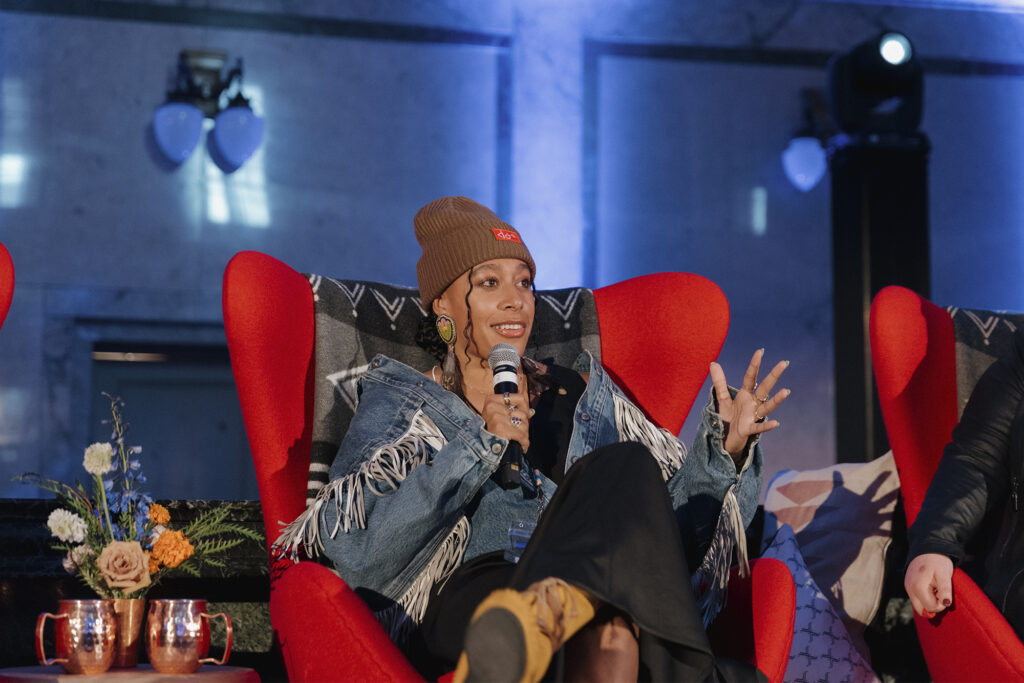
Bastien-N’Diaye is one of many creators who found success through authenticity. When creators and followers develop a genuine bond, their videos will garner more comments, follows, and likes. The TikTok algorithm loves this type of interaction, rewarding high-engagement videos with a spot on trending pages. In that sense, TikTok is the most social of social media platforms: for sustainable success, creators need to build an active relationship with their followers. Yawnghwe said that fellow Indigenous creators were especially receptive: “Since we started taking back the mic, telling our own stories in our own way, and creating the space for ourselves, [the space] that we need to thrive — suddenly, we found community in that,” she said.
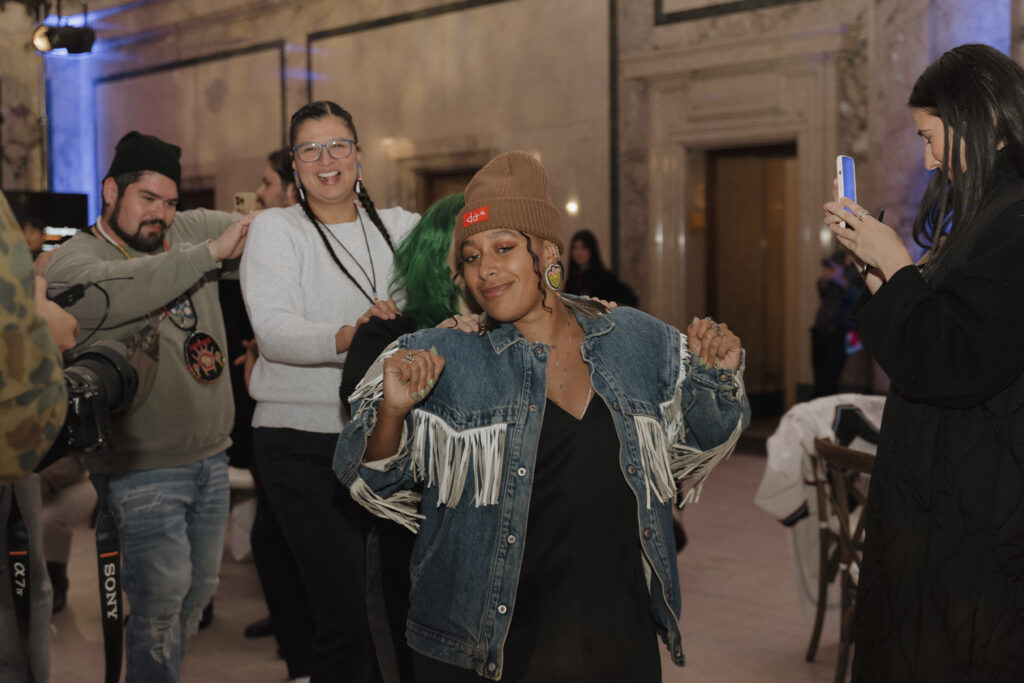
For Yawnghwe, though, communities on TikTok aren’t just about getting likes. Instead, the creator sees potential to turn digital relationships into meaningful social change. “I think it’s really important to recognize the places we come from, and the people that we come from. I know that everybody in this room shares this greater community, but [we’re] reclaiming space and trying to do something that will create space for the next generation.”
Jones shared the sentiment. Like many creators, Jones continues foster his career outside the platform with workshops and performances. However, the two streams are symbiotic; a healthy online following has enhanced Jones’ offline experiences. “A couple years ago — 5, 6, 7, 8, 10, years ago — when I would teach workshops with youth, a lot of youth and a lot of Indigenous people [weren’t] proud to be who we are. Of course, you [were] in some spaces, but even for me: I wasn’t proud to be Indigenous, in some spaces,” he said. With social media, that’s changing. Jones noted that Indigenous youth have more opportunities to get in touch with their community online. That’s led to more confidence for Jones’ Indigenous students: “Now, I’ve seen — especially in my community — when I go to do a workshop somewhere, I’ll see little kids come up and say: ‘Hey, I’m Indigenous too!'”
Now, TikTok is actively encouraging community building with the National Screen Institute. Together, they’ve developed the Indigenous Accelerator Program, a six-week program geared towards emerging creators on TikTok. Led by professionals like program advisor Sherry McKay, the program has opportunities to hear from established Indigenous creators like Jones, Yawnghwe, Blair, and Bastien-N’Diaye. Topics shed light on digital community building and career growth.
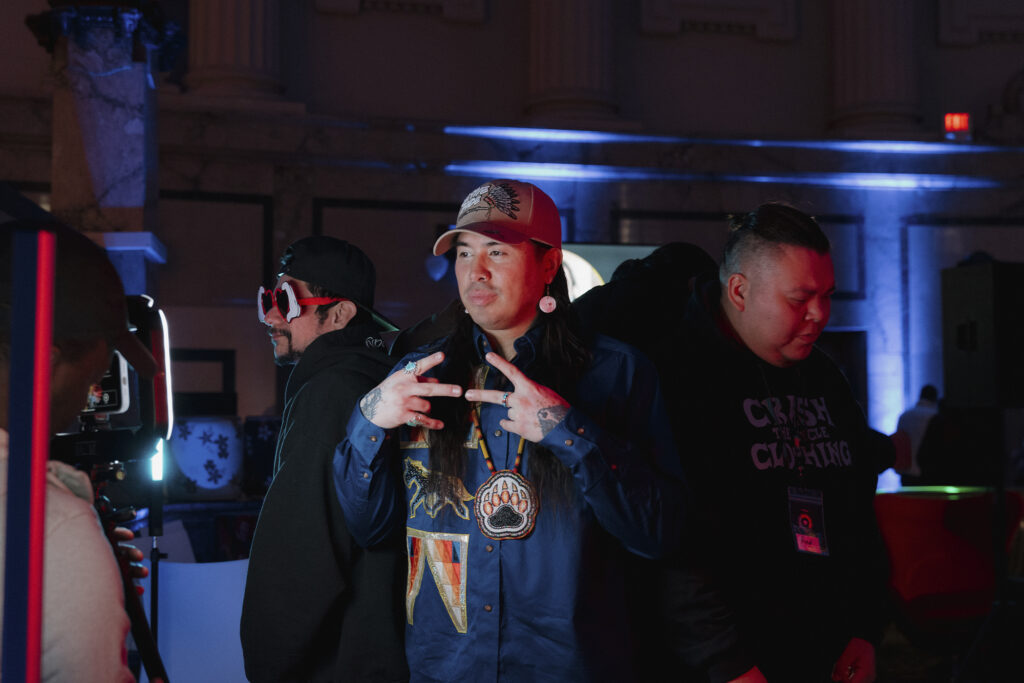
Julian Robia, a singer-songwriter from Timberlea, Nova Scotia, participated in the Indigenous Accelerator Program this year. “With this program, I wanted to connect with other Indigenous people and creators,” he told me. “But I also wanted to learn some of the technical things behind [TikTok] and get some advice on what kind of content works, and what kind of content doesn’t work.” Building an audience from scratch is no easy feat. Alongside the typical challenges of social media, TikTok’s content-focused algorithm can make popularity and engagement feel especially personal.
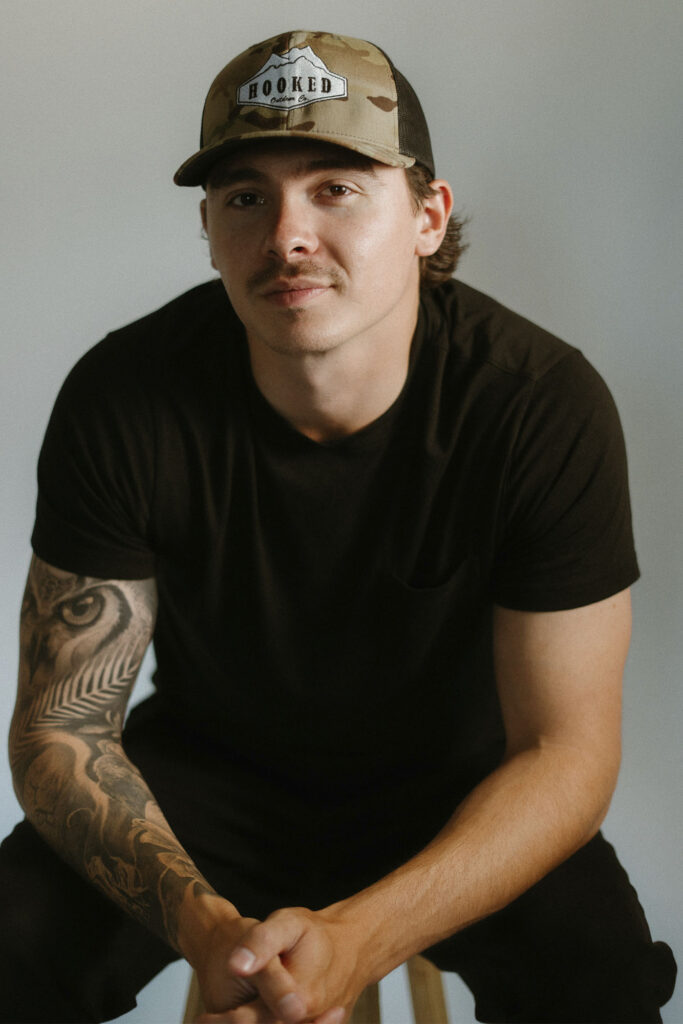
When he entered the program, Robia was eager to learn how other creators approached these problems. “How do other content creators, like those in the panel we just saw, how do they go about being authentic? Cause it can be really hard,” he said.
Still, Robia agreed that TikTok is ideal for a budding musician. With an ever-changing chart of trending audios, hitting the top of the platform often precedes success on Billboard Hot 100. “You used to have to either get noticed — just get insanely lucky — or go to Nashville, live in your car and try to make it,” Robia said. “This is an opportunity to still have another career that supports me, so I don’t have to live in my car, and still do music. I have an outlet for my music that I don’t need anybody’s permission or blessing to be in.”
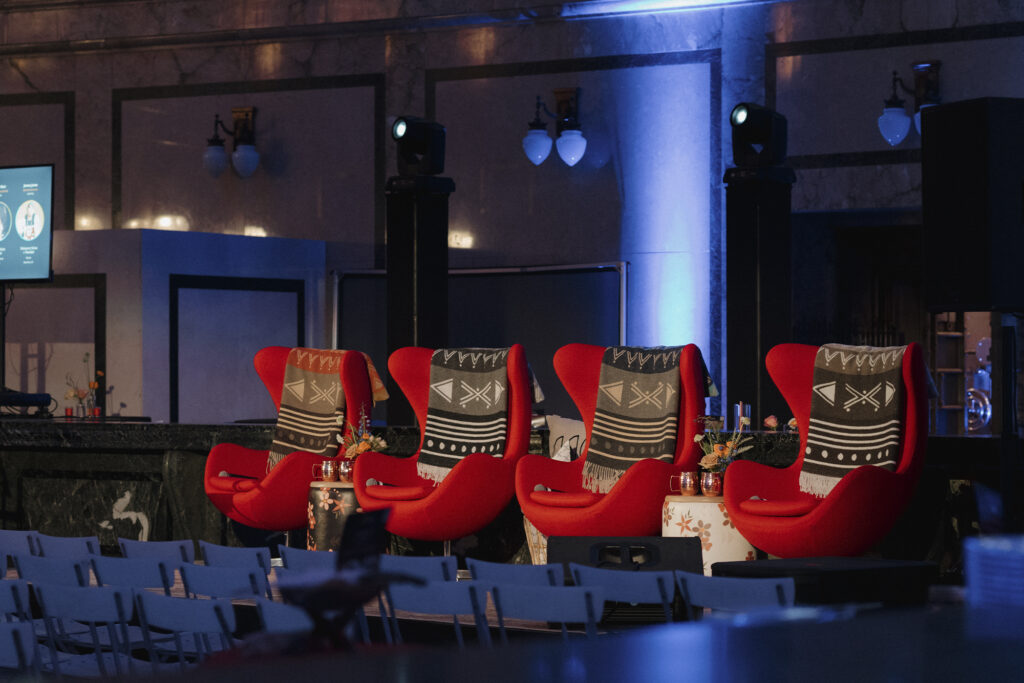
Robia wasn’t the only one in the room with musical ambitions. At the end of the panel, James Jones also shared that he’s working on an album; he plans to put the finishing touches on it early next year. For Robia, it’s encouraging to find fellow Indigenous creators with similar goals. “All of the people I’ve met here, they don’t have a scarcity mindset. They have a ‘boost everybody up the mindset,’ you know? With things like TikTok, somebody else doesn’t have to fail so that you can succeed.”
He’s right: TikTok has no shortage of opportunities. Creators and consumers alike can already reap the benefits of a democratized media industry — for the simple cost of a username and password, you can tap into a worldwide audience and an international video library. With endeavours like the Visionary Voices panel, Indigenous creators are translating that digital community into the real world.
